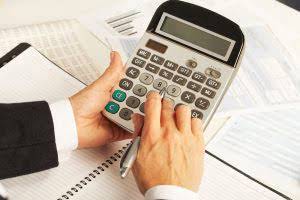
PP&E may be liquidated when a company is experiencing financial difficulties. Selling property, plant, and equipment to fund business operations may signal financial trouble. Companies can also borrow from their PP&E as a floating lien, meaning the equipment can be used as collateral for a loan.
What Is Included in the Plant Assets?
The objective of IAS 16 is to prescribe the accounting treatment for property, plant, and equipment. The principal issues are the recognition of assets, the determination of their carrying amounts, and the depreciation charges and impairment losses to be recognised in relation to them. This would include long term assets such as buildings and equipment used by a company. Plant assets (other than land) will be depreciated over their useful lives.
Types of Assets
Plant assets are a part of non-current assets and are usually the largest group of assets one can find in the financial statements. They normally show up as the first line item under non-current assets. Depreciation and amortization, or the process of expensing an item over a longer period of time than when it was acquired, are calculated on a straight-line basis. It’s determined by multiplying the difference between an asset’s purchase price and its projected salvage value by the number of years it’ll be in use. Making continual improvements and continuously reviewing the quality of assets is an important part of keeping a company healthy. Improvements should be done on a regular basis or when a scenario necessitates intervention to extend the life of assets and avoid future issues with their capacity to serve a business.

Objective of IAS 16
As they will be used for more than one accounting period, they are subject to depreciation. The purpose of depreciation is to “charge out” a portion of the plant assets which have been used during the accounting period to generate business revenue. Though plant assets are plant assets definition sometimes seen as expensive, not all have the same value or are prioritized by a company. Rather, it is dependent on the unique requirements of the company. Examples of plant assets include factory machinery, delivery trucks, computers, desks, and manufacturing tools.
- These items stay put and are crucial for a building’s operations.
- There are several methods to calculate depreciation, but all reflect how assets lose value over time.
- Industries or businesses that require extensive fixed assets like PP&E are described as capital intensive.
- A new press technology has just launched in the market, and the company owner decided to acquire the machine.
- As they will be used for more than one accounting period, they are subject to depreciation.
- Land can be purchased by a start-up company for a single site, but a bigger company can possess several types of land that serve diverse functions for the company and its subsidiaries.
Companies also pour money into upgrades and fixes before these places can start operations. For example, due to a decline in market demand, the business determines that the manufacturing machine’s recoverable amount is now £90,000 (down from £110,000). For example, a business spends £5,000 on upgrading the manufacturing machine to improve its efficiency. Plant assets are initially recorded at cost plus all expenditures necessary to buy and prepare the asset for its intended use. This classification is rarely used, having been superseded by such other asset classifications as Buildings and Equipment. For the past 52 years, Harold Averkamp (CPA, MBA) hasworked as an accounting supervisor, manager, consultant, university instructor, and innovator in teaching accounting online.
What Are Noncurrent Assets?
They help companies make things, provide services, and earn money. Taking care of these assets makes sure they last longer and work better. Knowing when equipment will likely need replacement helps plan capital expenditures wisely; this ensures continuous operation without unexpected downtime or costs due to failed assets. https://www.bookstime.com/ Asset management might not be the most thrilling topic on your to-do list, but it’s a critical piece of the business puzzle. If you’ve ever scratched your head wondering how to keep track of all the big-ticket items that your company relies on daily – from factory machinery to office computers – you’re not alone.
- For the past 52 years, Harold Averkamp (CPA, MBA) hasworked as an accounting supervisor, manager, consultant, university instructor, and innovator in teaching accounting online.
- Later on, the company will charge the depreciation according to the method of depreciation it usually follows.
- Without good asset management, businesses could face downtime and high maintenance costs.
- IAS 16 defines them as physical assets that are used to produce revenue or for administrative purposes and are expected to be in use for more than one accounting period.
- The same process will be repeated every year at the end of the financial year.
- The purpose of depreciation is to “charge out” a portion of the plant assets which have been used during the accounting period to generate business revenue.
Straight Line Method
The only exception is land, which does not have a limited useful life, so cannot be depreciated. Shaun Conrad is a Certified Public Accountant and CPA exam expert with a passion for teaching. After almost a decade of experience in public accounting, he created MyAccountingCourse.com to help people learn accounting & finance, pass the CPA exam, and start their career.

